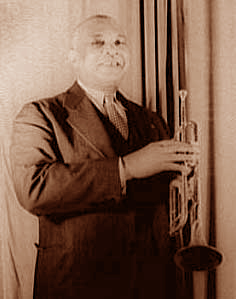

William Christopher Handy (1873-1958), a composer, bandleader and publisher of blues music, is often given the title "Father of the Blues." Although some question if he truly deserves this honor, Handy clearly played an important role in helping the blues become a popular and mainstream part of American music. One of Handy’s first hits was a piece he wrote in 1912 called Memphis Blues. Memphis Blues incorporated blue notes and the 12-bar blues progression with the syncopated musical style of ragtime, and although Handy was not the first musician to blend ragtime with the blues, from this point on, this style of music became extremely popular. [147]
Some of the characteristics of blues music include: the syncopated rhythms of ragtime; texts that deal with the melancholy side of life; an expressive vocal and instrumental style that frequently includes slides between pitches; the call and response pattern from the work songs of slaves; and the use of blue notes and familiar patterns such as the 12-bar blues. Blue notes are produced by lowering or flatting the third, seventh, and sometimes the fifth of a major scale. An example of a blues scale is found below.

A 12-bar blues pattern typically has three four-measure phrases. The first two phrases often have the same melody, with a different third phrase. In instrumental music, the third phrase often consists of improvisation by the soloist. Other commonly used blues patterns include the 8-bar, and 16-bar blues.
© Copyright 2025 RK Deverich. All rights reserved.
Although this online bass class is provided free of charge, all rights are reserved and this content is protected by international copyright law. It is illegal to copy, post or publish this content in any form, and displaying any of this material on other websites, blogs or feeds is prohibited. Permission is given for individual users to print pages and perform music from this website for their personal, noncommercial use.